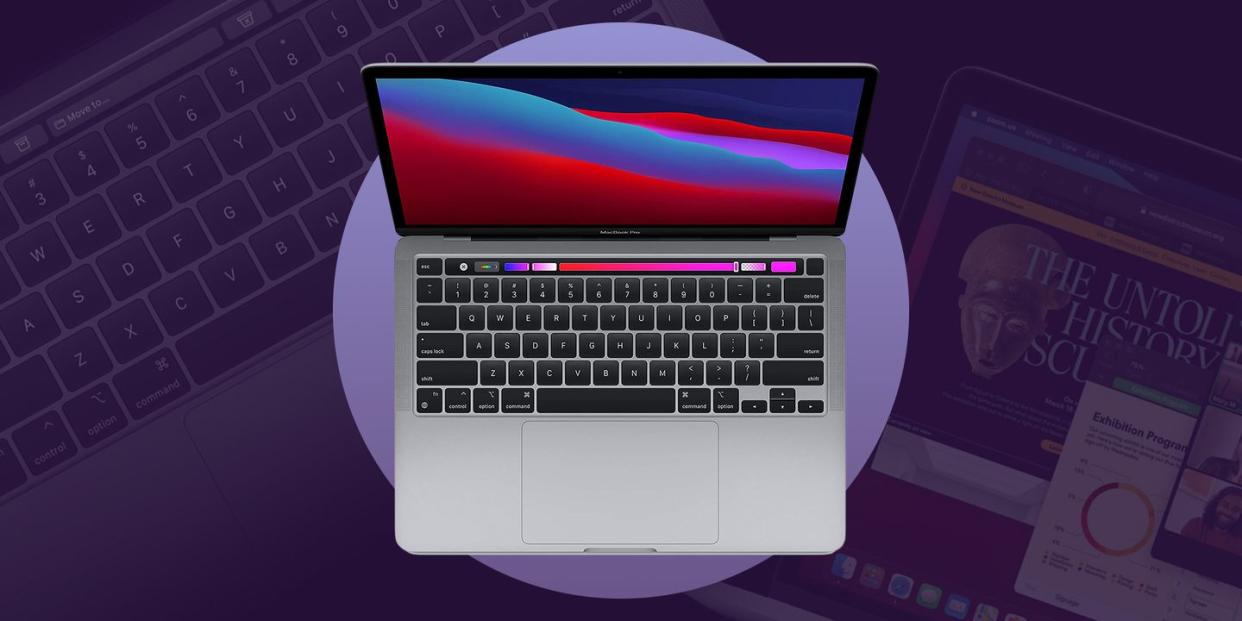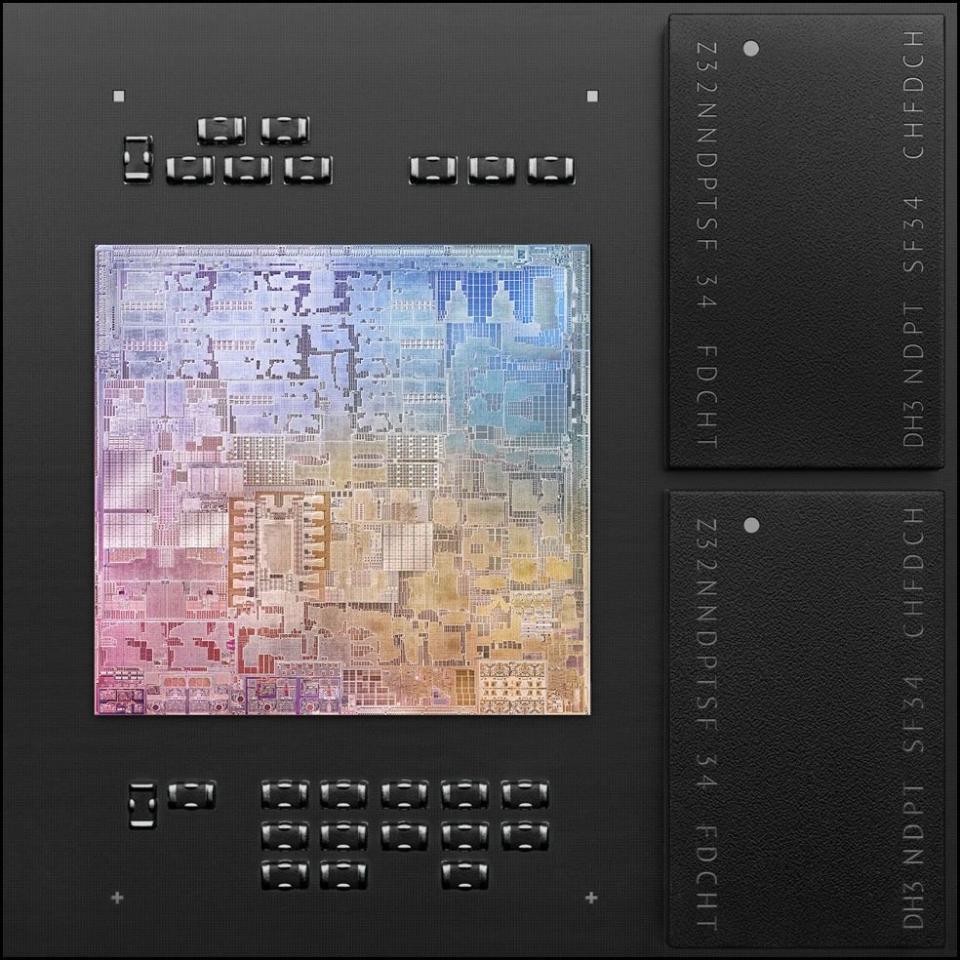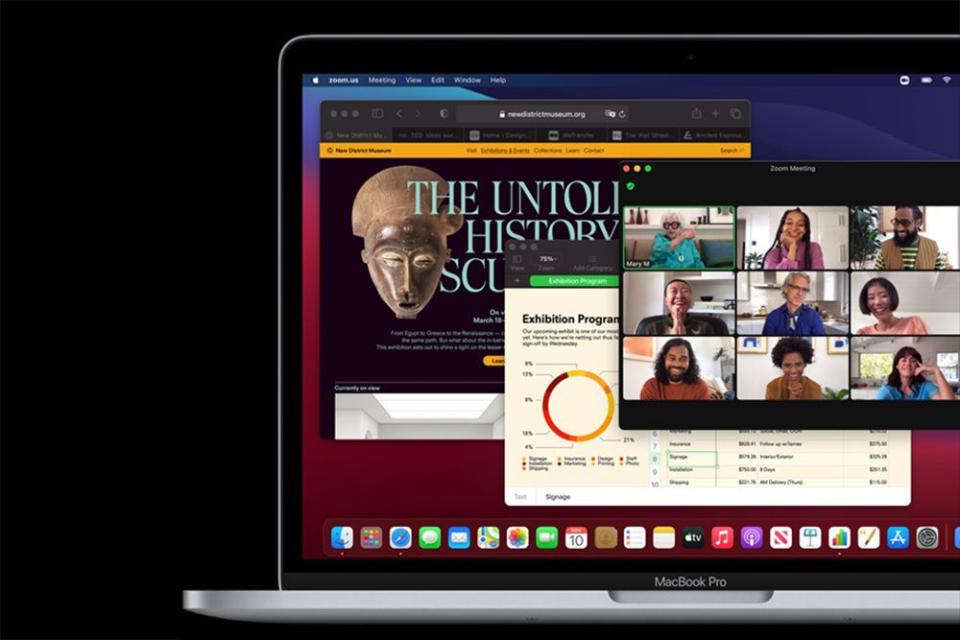Why the MacBook Pro with an Apple M1 Chip Is My Favorite 13-Inch Laptop

The M1 chip was the centerpiece of Apple’s “One More Thing” product event from November 2020. The groundbreaking hardware bit debuted on the Mac mini, the MacBook Air, as well as the 13-inch MacBook Pro.
I was particularly thrilled to test the M1-toting MacBook Pro variant. Thanks to the new chip, it brings not only significant performance gains, but also the best battery life in a MacBook yet.
Key Specs
• Apple M1 chip with 8-core CPU and 8-core GPU, Neural Engine
• 13.3-inch Retina display with True Tone Technology, P3 color gamut
• 8/16GB of RAM; up to 2TB SSD
• Touch Bar & Touch ID fingerprint sensor
• Two USB-C ports with Thunderbolt 3/USB 4 compatibility
The MacBook Pro with an M1 chip has the same design and 13-inch Retina display panel as the Intel-equipped model we tested in May 2020. It also has the same amazing keyboard, trackpad, and Touch Bar.
Starting at $1,299, the newcomer is the most affordable MacBook Pro, replacing the version with an eighth-generation Intel processor in Apple’s product range. It is available in silver or space gray.
After more than a month of testing, the MacBook Pro with an M1 chip exceeded my expectations. Here’s why it’s my favorite 13-inch laptop available today.
All About the M1 Chip
The Apple M1 is the first computer chip that’s built via a 5-nanometer process. The avant-garde technology has packed 16 billion transistors — microscopic computer processor building blocks — into a minuscule space. The same process has been used in the making of the industry-crushing A14 Bionic chip that powers the iPhone 12 and iPhone 12 Pro.

By combining all essential components (CPU, GPU, Neural Engine, memory) together into one chip, the M1 delivers an industry-altering blend of power and energy efficiency. According to Apple, the chip is up to two times more capable than its rivals in terms of graphics and processing power. Compared to the eighth-generation Intel Core chips found in the previous entry-level MacBook Pro, the performance leap is even bigger.
Big Sur — the latest macOS iteration — complements the M1 perfectly. The OS has been designed to take full advantage of its capabilities. Countless popular apps for the platform, including Google Chrome, have also been optimized to work well with the chip.
The MacBook Pro with an M1 chip performed flawlessly during my testing. Apps opened instantly, and switching between a multitude of them was just as fast. The overall experience is similar to using an iPhone — a product that’s a synonym for a perfect harmony between hardware and software.
Because of the M1 chip and the optimized software for it, the new MacBook Pro made quick work of my busy workflow. The latter consists of constantly switching between a double-digit number of open browser tabs, an email client, Slack, Spotify, Zoom, and Affinity Photo, among other apps.
A High Watermark for Battery Performance
Calling the battery life of the 13-inch MacBook Pro with an M1 chip epic is an understatement. With up to 17 hours of web browsing and 18 hours of video streaming between charges, the notebook delivers more screen-on time than any other MacBook.
However, the above numbers are not what blew my mind. Instead, I was astounded by the new MacBook Pro’s ability to consistently deliver insane battery life from mixed use.
On my second day of testing, I took the ready-to-go notebook off the charger at 8 a.m. and got to work. Around 6 p.m., after a busy day of creating content, fielding emails, participating in Slack discussions and Zoom calls (to name a few tasks), the battery status showed me 45% remaining.
I achieved the above feat without being mindful about my screen brightness or the tasks on hand. The M1 chip made it possible, because half of its eight CPU cores have a higher efficiency, which allows them to perform common tasks by using little power. The remaining performance cores are designed for heavier workloads.
The MacBook Pro with an M1 chip has the best battery life of any laptop I have experienced to date. Its real-life power efficiency makes other ultrabooks feel dated in comparison.
More Noteworthy Upgrades
The M1 chip is not the only exciting MacBook Pro upgrade. The notebook also features futureproof Wi-Fi 6 connectivity (a first for a MacBook Pro), faster Thunderbolt connectors with USB 4 support, and studio-quality microphones that are even more reliable for making calls.

I only wish that the built-in FaceTime HD camera had a sensor with a higher resolution like the latest iMac. Thankfully, the M1 chip and the enhanced processing it brings still offer a noticeable improvement in its video quality.
Wrap-Up
Apple offers the 13-inch MacBook Pro with an M1 chip with up to 16GB of RAM and up to 2TB of SSD storage. Unless you really need the bigger memory options (up to 32GB of RAM and up to 4TB of storage respectively), as well as the additional USB-C ports that the pricier 13-inch Pro with an Intel processor offers, this is the compact MacBook to get.
The MacBook Air with an Apple M1 chip, on the other hand, has excellent performance and battery life in a more elegant form factor — with no cooling fans — for less. However, it’s important to note that the GPU of the entry-level variant is not as capable as the MacBook Pro’s — upgrading it will bring their pricing almost on par. Its Retina display has a lower maximum brightness, too.
Read More:
20 of Our Favorite MacBook Accessories
Got AirPods or AirPods Pro? Here Are Our Favorite Accessories!
We Vouch for These MacBook Stands
Follow BestProducts.com on Facebook, Instagram, Twitter, and Pinterest!
You Might Also Like

